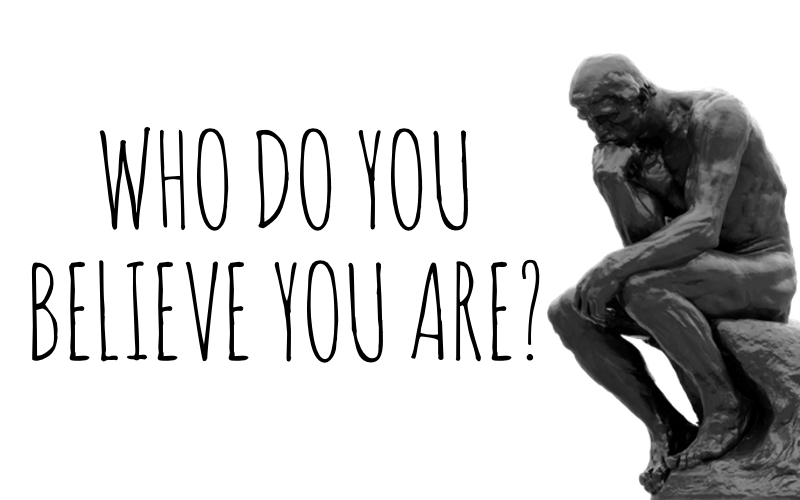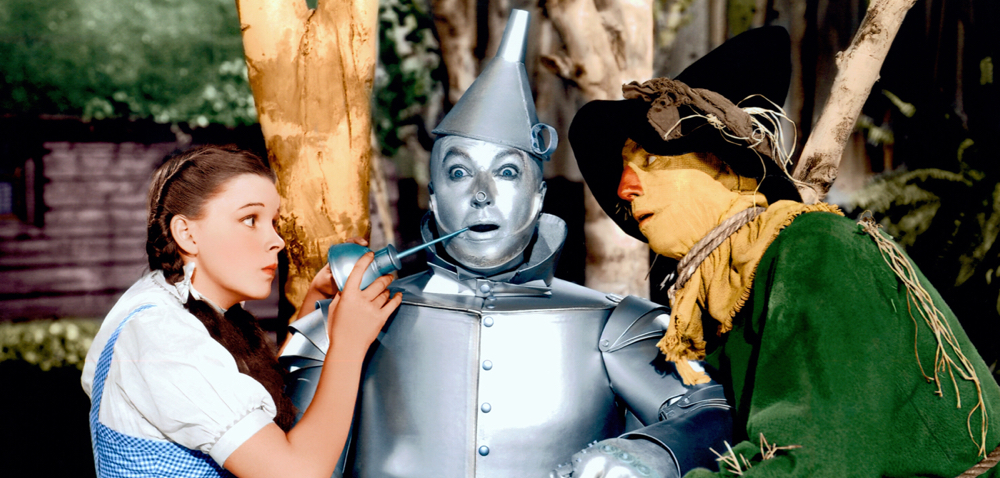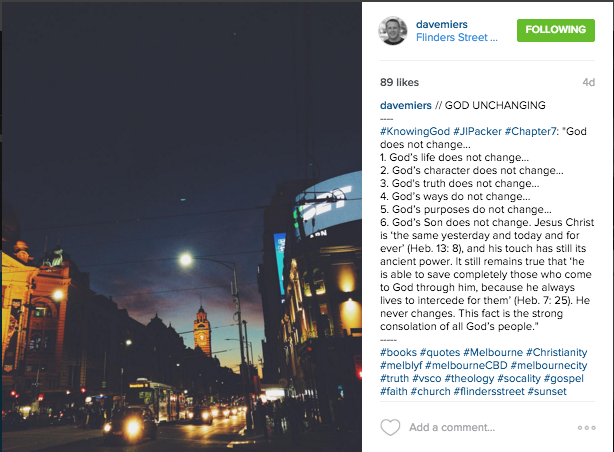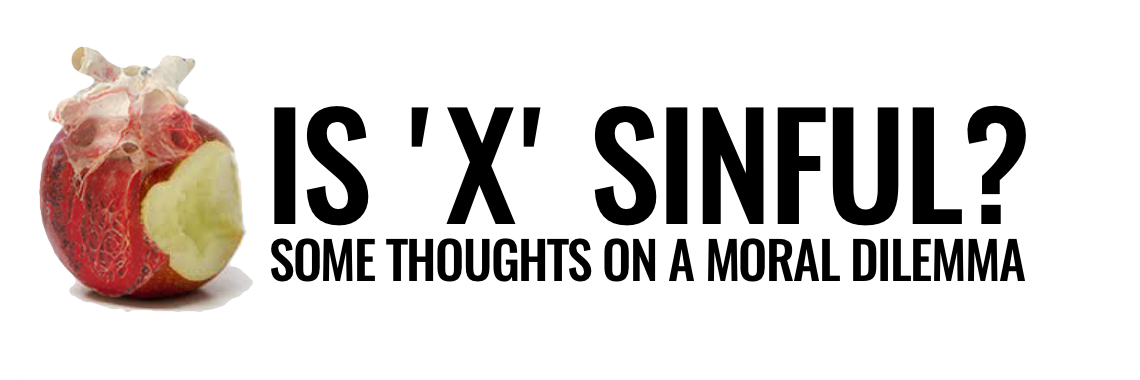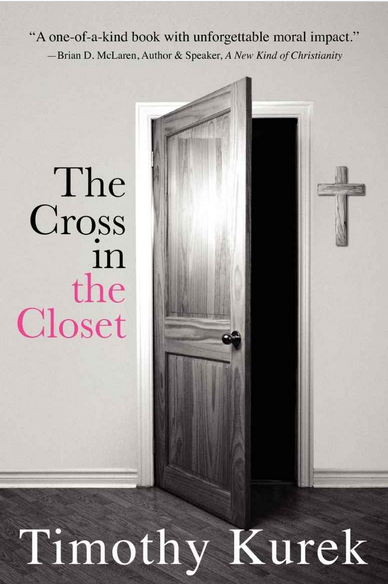Back in 2015 I posted one part of a planned two part epic ‘By the rivers of Babylon’, I didn’t ever post the second part, and nobody seemed to mind. Until today.
To recap, I posted some quotes from ancient near eastern rituals to do with the creation of ‘images of God’ — particularly idol statues — and looked at comparisons with Genesis 2, to suggest that there’s a conceptual link; that in the Genesis creation story we see God creating living, breathing, representatives of the divine, in deliberate contrast to rituals, creation stories, and an understanding of humanity in the ancient near east where man created dead, breathless, statues of gods and then had to develop a cognitive dissonance to be able to encounter that statue as though it was a representative of divine life. We have existing accounts, from the ancient world, of the creation of a divine image and its revivification or rededication after an idol had been captured by an enemy or removed from its sanctuary. I have written bits and pieces expanding on this theme, but thought it’d be nice to come back and finish the ‘epic’ as promised.
I suggested the parallel between the Genesis type scene of creation and re-creation of a divine image (which repeats itself through the Old Testament), mirrors these ancient rituals in the following ways, where an image (tselem) is:
- Formed and fashioned, near water (and symbolically, in a sense, moved through water, it’s interesting that God places the man in the garden twice, once before the mention of the water, and once after) (Genesis 2:6, 8, 10-15)
- Inspired, or given ‘breath’ so that it the image is vivified. It is to be thought of as a living representation of the God whose image it bears. (Genesis 2:7)
- Declared fit for purpose within a system, and via connection to God. (Genesis 1:26-31)
- Placed (or enthroned) in the Temple/garden sanctuary and given a job within the Temple. (Genesis 2:8-9, 15)
- The images are provided for with food and drink. (Genesis 2:16-17)
- The image fulfills a function in representing the God behind the image (Genesis 2:19-20)
I pointed out that this pattern repeated itself with Noah, in the creation of Israel as a people, and was anticipated by the prophets about Israel’s return from exile — where God’s people would be recommissioned as his image bearers. And then promised a follow up post to connect this to the rest of the story of the Bible.
Recap over.
One of my favourite bits of Biblical Theology — perhaps because it was one of the first pieces to grip my imagination about how the Bible might work — comes from connecting Psalm 23 to Jesus, the good shepherd.
The Lord is my shepherd, I lack nothing.
He makes me lie down in green pastures,
he leads me beside quiet waters,
he refreshes my soul.
He guides me along the right paths
for his name’s sake.
Even though I walk
through the darkest valley,
I will fear no evil,
for you are with me;
your rod and your staff,
they comfort me.
You prepare a table before me
in the presence of my enemies.
You anoint my head with oil;
my cup overflows.
Surely your goodness and love will follow me
all the days of my life,
and I will dwell in the house of the Lord
forever. — Psalm 23
It’s a beautiful Psalm as a standalone. But now read it against that number list. The narrator (first David) is:
- Placed by waters in the sanctuary of green pastures;
- His Soul restored — literally this is ‘nepesh’ in Hebrew and ‘psuche’ in the Greek translation of the Old Testament — the words used for the ‘breath of life’ breathed in to Adam in Genesis 2. It’s a recreation. The ‘restored’ word is the same word used to describe return from exile in places like Deuteronomy 30:3, 1 Kings 8:34, and Jeremiah 30:3
- He is guided along the right paths by God for his name’s sake (a purpose within a system, where the ‘for his name’s sake’ is the purpose, connected to image bearing representation and the failure to live for his name is what lead Israel to exile, to no longer being ‘image bearers’, which is a breaking of the 3rd commandment).
- He is taken to a place where there is a table, but at the end ‘dwells in the house of the Lord forever’ (placed in the temple)
- He is fed, and his cup overflows (the images are provided with food and drink).
- He is anointed with oil — which presumably has some connection to fulfilling a function to represent the God behind the image, alongside the ‘his name’s sake.’
Now. In terms of the Biblical theology thing, i’d often simply connected The Lord as shepherd to Jesus as shepherd — Jesus as the provider who specifically does all these things for people, or promises to, as the good shepherd. Look at what Jesus says around the feeding of the 5,000 as recorded by Mark (Mark 6, where the people are ‘like sheep without a shepherd) and John, where the feeding of the 5,000 comes before passages about the gift of the Spirit as living water that brings eternal life — in fact, the whole of John’s Gospel essentially unpacks that re-creation schema. But the Biblical theology connection that makes Jesus ‘the Lord who is the shepherd,’ with the feeding of the 5,000 in the mix, goes something like:
- He places people by water, on green pastures (Mark 6:39, John 6:10)
- He feeds them with ‘overflowing’ provision (Mark 6:42-43, John 6:12-14)
- The people are ‘sheep without a shepherd’ (Mark 6), and Jesus calls himself ‘the good shepherd’ (John 10).
There’s a degree to which I think this is still a legitimate line to draw from Old to New Testament. But there’s a better story, a better line through the Old Testament story of God creating and revivifying broken images that involves Jesus being the ‘new Adam’ — the new ‘image’ — through whom we are restored as we are united to him; an a reading of Psalm 23 that places Jesus in the narrative schema as the first ‘restored Israelite’, the one whom David points to, who can say ‘the Lord is my shepherd’ — I owe much of this reading to Doug Green, whose paper ‘The Lord is Christ’s Shepherd. Psalm 23 as Messianic Prophecy’ is brilliant.
He says, amongst other things:
“… it is appropriate to read the whole of the Psalter in a prophetic and eschatological direction. More specifically, all of the “Psalms of David” should be read as messianic psalms that describe different dimensions of the life — and especially the suffering — of Israel’s eschatological King.”
“In other words, the apostolic authors adopted not simply a general Christological approach to reading the Psalter, wherein Christ could be “seen” in the psalms, but more specifically a decidedly Christotelic approach, reading it in connection with Israel’s great narrative of redemption, which from their perspective had reached its surprising climax (Greek telos, “end” or “goal” in the story of Jesus, the Messiah.”
Green describes the structure of the psalm as a move from “pasturage to wilderness to temple” that can be described as paralleling “promised land -> exile -> restoration” or “Eden -> Exile from the Garden -> New Jerusalem”. He says:
“Even in their grammatical-historical context, verses 4 and 5, with their images of escape from the threat of death and (possibly) return from exile, tell an incipient resurrection story. Read prophetically, these verses echo the story of the Isaianic Servant as they depict the Messiah’s journey through some kind of suffering, which will subsequently change into his enjoyment of the blessed life, and more specifically to an eschatological banquet…
“If Jesus Christ is indeed the telos, or goal, of Israel’s story, and more specifically the fulfilment of the OT’s messianic prophecies — including the Psalter understood as a prophetic book — then Christian interpretation of the OT must be an exercise in reading backwards, of rereading earlier texts so that their meanings cohere with what God has actually done in history in Jesus Christ.”
He concludes “the eschatological David has been brought from the valley of death into the heavenly house of the Lord, to reside there.” Green, I think rightly, describes this as “the story of those who have been united to Christ by faith” — we’re brought into the story through our union with Christ.
If this Psalm is messianic in this sense, then in some way the Lord’s anointed — who is shepherded by God — somehow leads God’s people through exile from God — or death — into restoration and the temple. If Jesus comes as the restoration moment promised in the prophets, and this Psalm, and he does this by being the true image bearer but his restoration into being an image bearer through exile and death is also grounds for our restoration.
So, that’s a fun reading of Psalm 23 that connects it to the fulfilment of Old Testament prophecies — where Jesus is the king who ends our exile from God, but there’s more to this story that is explicitly connected to the proposed metanarrative of the Bible; that it’s about God re-creating and revivifying divine image bearers (where idolatry transforms us into the image of dead idols rather than the living God).
My suggestion is that the Gospels, in depicting Jesus as a new Adam, and new Israel, also follow the pattern of establishing Jesus as an image bearer — according to those Old Testament (and Ancient Near Eastern) types — and that this is applied to the church both through union with Christ, baptism, and the indwelling of the Spirit — the things that mark out our transformation into the image of Jesus, from being broken idol-worshipping images. Jesus is “the image of the invisible God” (Colossians 1:15) and the “exact representation of God’s being” (Hebrews 1:3), but there are also ways the Gospels follow the script.
- Jesus is, in a particular sense, ‘formed’ or fashioned near water at his baptism — if crossing the Jordan was Israel’s path to nationhood and part of how Exodus paints them being presented as God’s image bearers — his children, then Jesus’ baptism in the waters of the Jordan mark his calling in the same way. All four Gospels include the baptism of Jesus.
- Especially if the Spirit descending on Jesus is the ‘breath’ of God marking him . — if this is Jesus symbolically being given a certain sort of ‘breath’ as Adam was (though Adam receives the ‘psuche’ and Jesus the ‘pneuma’ in Greek — and that distinction is interesting particularly because Paul makes it a distinction between Adam the ‘psucheikon’ (or natural/breathed/souled image) and Jesus the ‘pneumatikon’ (or breathed/spirited image) in 1 Corinthians 15:44 as he reflects on and quotes from Genesis 2 and the resurrection, see below). Pneuma and psuche are used in a way that, at a glance, looks interchangeable for breath and Spirit throughout the Old Testament.
- Jesus is declared ‘fit for purpose’ in connection with God in the words that speak from heaven — “You are my Son, whom I love; with you I am well pleased.” (Mark 1:11), “This is my Son, whom I love; with him I am well pleased.” (Matthew 3:17), “You are my Son, whom I love; with you I am well pleased.” (Luke 3:22), while John’s Gospel has John the Baptist say, of Jesus, ‘The man on whom you see the Spirit come down and remain is the one who will baptize with the Holy Spirit.” (John 1:33 — which is significant if the bringing of the Holy Spirit is connected to the end of exile and the restoration of God’s image bearing people).
- Jesus is the Temple — or the dwelling place of God — but he also goes in order to prepare an eschatological temple, and in order to transform God’s new image bearers into human temples. This one takes some unpacking. He is also the living representative of God (Hebrews 1), and if we see him we’ve seen the father (John 14:9). He is the “word of God” in flesh, and he “is God” ‘tabernacling’, or ‘dwelling’ in the world in the flesh (John 1:1-14). In John 2, as he cleanses the Temple (which has not ever had God’s spirit come to dwell in it after exile in the way that it did before exile) he speaks of his body as the temple (John 2:22). But he also speaks of his “father’s house” (John 2:16). In John 14:1-3 Jesus says: “My Father’s house has many rooms; if that were not so, would I have told you that I am going there to prepare a place for you? And if I go and prepare a place for you, I will come back and take you to be with me that you also may be where I am…” this has often been understood as being about the heavenly city-temple — a new Eden — that John sees coming down to earth in Revelation 21, but in an immediate sense of fulfilment of the ‘place for you’ and the going and coming, Jesus says the Spirit is him ‘coming back’ — “But you know him, for he lives with you and will be in you. I will not leave you as orphans; I will come to you.” (John 14:17-18) and then “you heard me say, ‘I am going away and I am coming back to you.’ If you loved me, you would be glad that I am going to the Father, for the Father is greater than I. I have told you now before it happens, so that when it does happen you will believe.” (John 14:28-29). The ‘coming back’ might purely be eschatological, but it seems to both immediately describe the resurrection, the ascension (as part of the “going”), and the coming of the Spirit as part of the “return” to them (and the end of the exile that ‘restores their souls’ — and ours).In John 16, in the same extended episode of teaching, Jesus explains more of the going and coming — “Jesus saw that they wanted to ask him about this, so he said to them, “Are you asking one another what I meant when I said, ‘In a little while you will see me no more, and then after a little while you will see me’? Very truly I tell you, you will weep and mourn while the world rejoices. You will grieve, but your grief will turn to joy” (John 16:19-20)… then, following Jesus death, and their grief, and his resurrection, John records the following: “The disciples were overjoyed when they saw the Lord. Again Jesus said, “Peace be with you! As the Father has sent me, I am sending you.” And with that he breathed on them and said, “Receive the Holy Spirit…” (John 20:20-22). When Jesus breathes into his disciples and commissions them in John 20:22 it uses the same Greek word for what God does to breathe life into Adam in the LXX.
The point at which the disciples understand Jesus’ reference to his body as the temple, we’re told, back in 2:22, is the resurrection: “After he was raised from the dead, his disciples recalled what he had said. Then they believed the scripture and the words that Jesus had spoken.” When this happen — the disciples become the ‘many rooms’ of the house of God, his Temple — as Jesus has been already, as marked by the Spirit descending on him at his baptism (a sort of symbolic end of the exile — God dwelling with his people again).
Luke does a fun thing with this in Acts 2, where he has the Spirit being poured out on God’s new temple (and I think given Luke’s Gospel ends with the followers of Jesus meeting daily in the temple, and given Acts 2 ends with a reference to the followers of Jesus meeting daily in the temple, and given the festival of Pentecost is a public gathering and there are many witnesses from the Jewish diaspora there, that the events of Pentecost probably happened in the Temple courts, not the upper room mentioned as the setting of the events in Acts 1). God’s new temple — his re-created image bearers — receive the Spirit, in an echo of the glory of his presence coming in to the first temple — with clouds and noise and flaming glory — in the courts of the temple building Jesus had condemned — the temple whose curtain tore when Jesus died as an expression of a sort of judgment on that building and a new way of access to God’s presence…
Jesus is also positioned as a new Adam in his temptation, especially as recorded in Luke’s Gospel, where the temptation follows the baptism, and genealogy (which goes back to “Adam, the son of God”. There’s some fun stuff going on with gardens, both Gethsemane, and at the resurrection where he is mistaken for ‘the gardener’ — where Adam’s original task in the garden was to ‘work and keep’ the garden.
The rest of the New Testament makes explicit what this point makes implicit, and draws us into the story through our union with Christ by the Holy Spirit — so that we too become temples of the Spirit, and we are transformed into the ‘image of Jesus’ rather than Adam.
- If Doug Green’s schema for Psalm 23 is correct, and it depicts Jesus’ life, death, and resurrection as the movement from Eden, to exile, to restoration in a new Eden, then there’s something nice about the resurrection appearance being in a garden, and being followed by Jesus eating with his disciples — but also, this becomes something fulfilled in Jesus’ ascension to heaven where he dwells with the father forever, and where there is a new Edenic orchard of food available (near running waters). The new creation is the ultimate re-creation, and Jesus, the Lamb, occupies a particularly central place in this new garden sanctuary — the ‘forever’ house of God.
“Then the angel showed me the river of the water of life, as clear as crystal, flowing from the throne of God and of the Lamb down the middle of the great street of the city. On each side of the river stood the tree of life, bearing twelve crops of fruit, yielding its fruit every month. And the leaves of the tree are for the healing of the nations. No longer will there be any curse. The throne of God and of the Lamb will be in the city, and his servants will serve him.” — Revelation 22:1-3
- The imperative that follows the baptism, and later the transfiguration, where Jesus is revealed as God’s son, with whom he is well pleased is “listen to him” — Jesus is God’s representative. The word made flesh (John 1), the way God speaks (Hebrews 1). The ‘image of the invisible God’ (Colossians 1). this point seems the least controversial.
There’s a difference between us, and Jesus, in this metanarrative — where the story of the Bible is the story of broken images being restored — we are broken by our sin and idolatry so that we bear the image of our counterfeit gods, as the Psalms put it the result of idolatry is that “those who worship them will become like them.” Sin — idolatry — leads to exile from God, curse, and death. De-creation even. The coming undone of the image we were created to bear. Romans 1 fleshes out how this works with regards to our exchanging the creator for created things. Our restoration comes through Jesus restoring us as worshippers (ala Romans 12) — through his sacrifice, his resurrection and the outpouring of his Spirit which is our ‘baptism’, the moment (depicted as receiving ‘living water’) that recasts us into his image as it re-creates us (see Paul on our being baptised into the death and resurrection of Jesus in Romans 6, such that we, as we receive the Spirit, become children of God again, conformed to the image of his son (Romans 8)). Jesus is a broken image restored because he takes our sin on his body at the cross — he is scourged and scarred and moves through death (God’s image lives and breathes but he breathes his last for us). The resurrection is his re-vivification, and the source of ours – where we move from death in Adam to life in Jesus (1 Corinthians 15) as our ‘psuche’ — the ‘breath of life’ in Genesis meets its ‘end’ or ‘telos’ — the life of God by his Spirit making us immortal images.
Where Paul says: “it is sown a natural body, it is raised a spiritual body. If there is a natural body, there is also a spiritual body” the word natural is psuchikon (ψυχικόν), while the word ‘spiritual’ is pneumatikon (πνευματικόν). Paul then quotes Genesis 2:7 to contrast Adam, the living being (ψυχὴν ζῶσαν) — something like ‘a living soul’, but I think it’s better rendered ‘a breathed being’ — in part because in Genesis 1:30 the animals also have ‘the breath of life’ in them’ which, in the LXX, also uses “ψυχὴν ζωῆς”) — with Jesus who is a ‘life-giving Spirit’ (πνεῦμα ζωοποιοῦν). God re-creates us, by the Spirit, through replacing Adam with Jesus in our genetic makeup… so that we share in the resurrection of Jesus rather than the death of Adam.
“And just as we have borne the image of the earthly man, so shall we bear the image of the heavenly man.” — 1 Corinthians 15:49
It’s probably become clear now from much of the scaffolding above that the six elements of that ‘re-creation’ story also apply to us, in Christ, in ways that make the grand story our story. But here are some fun connections…
- We are formed via ‘water’ — Baptism is our visible picture of salvation — a picture of what the Spirit does for us as our ‘hearts are circumcised’ — as we are brought from exile away from God, from death and the dead future of our idols to life with God forever.
- We receive life by God’s breath — When we receive the Spirit it is ‘breathed into us’ by God as a gift of immortal life that changes who we are — moving us from Adam’s image of God to Jesus’ image of God.
- We are declared fit for a purpose within a system — When this happens and we are adopted as children of God, being transformed into his image we have a new purpose — the ‘great commission’ is a new ‘creation mandate’ — a call to be fruitful and multiply, filling the earth. We are also “God’s handiwork, created in Christ Jesus to do good works” (Ephesians 2:10) — Ephesians 2:10 uses the same pair of words for created and ‘handiwork’ that Romans 1:20 uses for ‘what has been made’ (and these are the only times that ‘handiwork’ word is used in the New Testament) — that which is meant to ‘reveal the divine nature and character of God’ — the things declared ‘good’ for that purpose in Genesis 1.
- We become priests/images/temples — The job Adam was given in the garden was priestly, Israel’s job was to be a ‘nation of priests’, and that is now the job of the church — the priesthood of believers in/as his temple. Our bodies are the ‘temple of the Spirit’ (1 Corinthians 6:19).
- We are fed/provided for — We receive ‘the bread of life’ and ‘living water’ and are invited to eat at God’s table — a reality we celebrate as we break bread together and remember Jesus’ sacrifice in anticipation of the heavenly banquet. There’s a fun thing with the Lord’s Prayer as it relates to all this (and the Psalm 23 stuff about God’s name) as it is a prayer for ‘the bread of tomorrow today’ — the Spirit — which arrives at the feast of bread, Pentecost — but you’ll have to wait for my boss to write his book on that for more…
- We are united by the Spirit to be God’s representatives in the world — his image bearers — transformed into the image of Christ as the ‘body of Christ’… Together. Think 1 Corinthians 12, 2 Corinthians 3-5, Romans 8, Romans 12, Ephesians 4, Colossians 3… and heaps of other places…
It’s fun seeing how this plays out in something like the account of the church in Acts 2, where this recreation process seems to be happening en masse as a fulfilment of the prophets, through Jesus’ ascension and the pouring out of the Spirit, and it’s fun drawing a line from there through to Revelation 21 and 22, then asking where in this narrative any particular passage sits, and considering the mechanics by which we become part of the narrative (via union with Christ).

